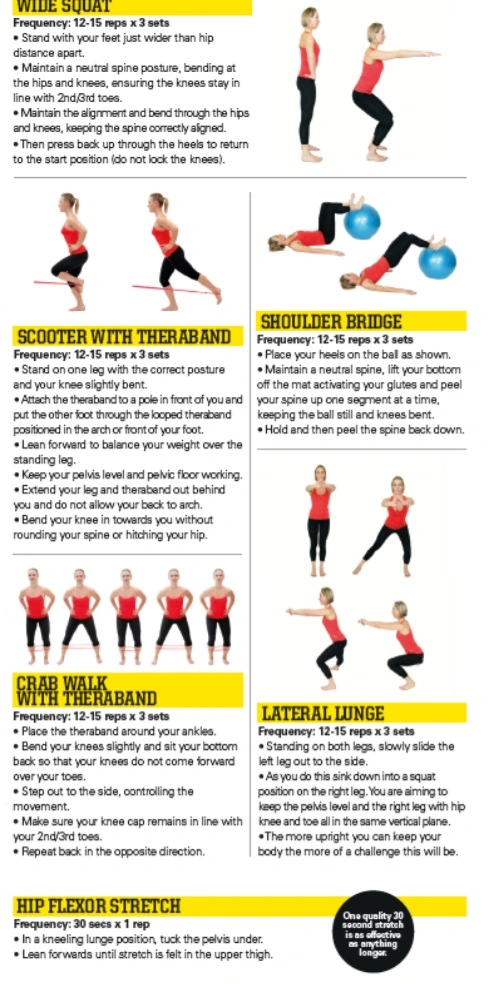Stephen Garvey explains how cyclists can help their hips! TriathlonPlus Physio Corner July 2016
Hip impingement or femoralacetabular impingement (FAI) as it is now more now widely known as, is a condition where there is abnormal contact between the femur (the ball) and the acetabulum (the socket). The ball and socket joint is enclosed by thick cartilage called the joint capsule and is surrounded by a ring of cartilage called the labrum which can be a particular source of pain in FAI.
FAI has been described in research papers as a mechanical process that causes pain when morphological abnormalities of the acetabulum and/or femur, combined with vigorous hip motion (especially in extremes of hip flexion), that can lead to repetitive collisions that damage the soft tissues such as the labrum.
FAI can be sub-classified into a CAM or pincer type deformity of either the femoral head or acetabulum respectively. CAM FAI is 14 times more likely in men and the average age of occurrence is 32 years of age. Pincer FAI is 3 times more likely in women and the average age of occurrence is at 40 years of age. Some of the common symptoms associated with FAI are pain in a ‘C-shape’ around the hip joint, clicking, locking, limited hip mobility, morning stiffness and pain sitting for long periods. The causes of FAI can be both hereditary and/or environmental. The diagnosis of FAI can be typically confirmed by a physical examination done by a physiotherapist or orthopaedic doctor. Imaging may then be used to confirm the severity of the impingement and the subsequent course of action to take. It is also worth noting that many people live with FAI and never become symptomatic.
Due to the repetitive nature of cycling, cyclists with a cadence of 90 rpm, can perform approximately 5,400 revolutions per hour. As mentioned, FAI can be a result of repetitive irritation to the hip joint at the top dead centre (12 0’ clock) of the pedalling stroke. This is more typical of TT or tri bike riders as your hip angle range is between 25-55 degrees and in road bike can be between 55-65 degrees. The less the hip angle, greater the chance of irritating the soft tissue of the hip joint possibly leading to pain and dysfunction.
That’s why the correct bike fit is crucial if you suffer from FAI as there is some on and off the bike methods that can be done to alleviate symptoms. Firstly, it’s important to do a musculoskeletal screening to establish your functional hip capability/mobility. There is little point in having an aggressive aerodynamic position if your hips can’t function efficiently in the lower hip ranges. A key point would be to do a dynamic video to understand an individual’s biomechanics before making any adaptations. Ways to achieve a more open hip angle on the bike can be done by a bike fitter who may increase the height of the stack (handlebars), shortening the reach (stem length), shorter crank length or even externally rotating the cleat position. This is done by a trained professional on a trial and error basis to establish an individual’s workable position.
As important as the on-bike adjustments are to avoiding hip impingement, the off-bike preparation is just as important. Pre-habilitation alongside regular cycling is key in ensuring a strong and healthy hip joint. Some of the common issues associated with FAI are tight hip flexors and deconditioned gluteal complex. Here are some specific exercises for those suffering from FAI to develop your flexibility, strength and conditioning.

